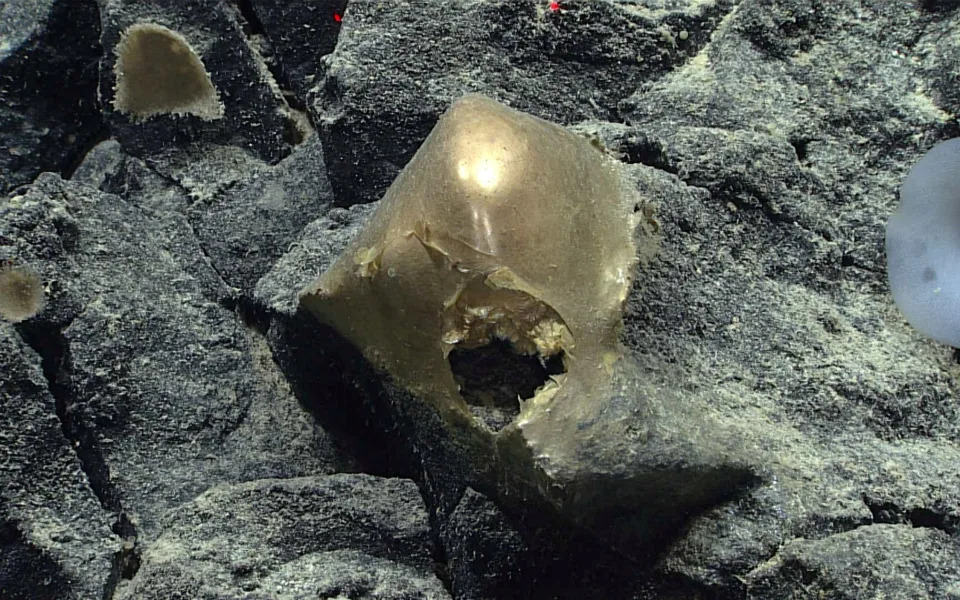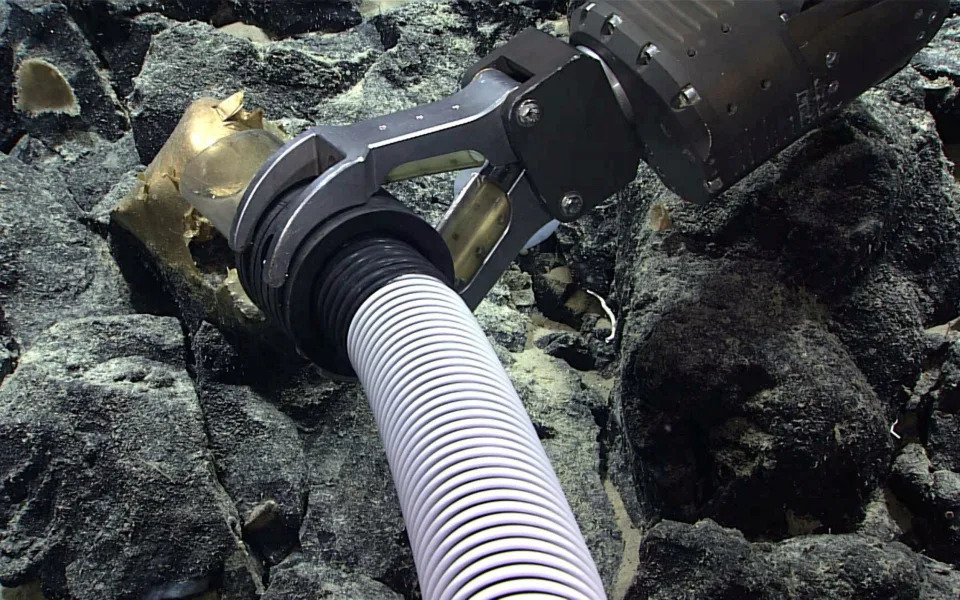The Telegraph https://uk.yahoo.com/news/scientists-baffled-golden-egg-found-161621770.html
A strange golden object found on the seafloor off the coast of Alaska is puzzling marine scientists who suspect it may be the egg of an unknown species.
The shiny object, which appears to have a hole in one side where a creature may have hatched, was discovered by a team of deep sea explorers from the US National Oceanic and Atmospheric Administration (NOAA) last week.
“Something tried to get in... or to get out,” one researcher was heard to say during the live feed of the remotely operated dive, which took place two miles beneath the surface at the site of an extinct volcano.
“I just hope when we poke it, something doesn’t decide to come out,” a second marine scientist said. “It’s like the beginning of a horror movie. When our collective knowledge can’t identify it, it’s something weird. What kind of an animal would make an egg casing like that?”
‘The’ team deployed a robotic arm to jiggle the “egg” free from its rock before sucking it up so it could be examined at the surface.
Although experts were expecting its texture to be gelatinous – like a shark egg – it was similar to skin tissue or silk, and DNA tests are now being carried out to find its identity.
NOAA said that an egg casing was the most likely explanation.
Several deep sea fish, such as sharks and rays are known to deposit egg cases in similar habitats but experts are stumped about its origin. Other suggestions have included a new type of coral, a Pacific barnacle or a sponge.
The mystery object was found on day eight of NOAA’s Seascape Alaska 5 expedition, which has been running since August 23, exploring the seabed around 250 miles south of the Alaskan coast.
Around one third of life in the ocean is thought to be undiscovered and the team has been taking samples of creatures living in deep-sea coral, sponge habitats, and mud volcanoes.
Kerry Howell, a professor of deep-sea ecology at the University of Plymouth, told the Mail Online that the object is “weird”.
“In my 20 years exploring the deep sea I have not seen anything like that,” she said. “It’s always exciting to see new things and I will wait eagerly for the analysis on the sample to understand what it actually is.
“There are many many undiscovered species in the deep sea so this could be related to a new species quite easily.”



